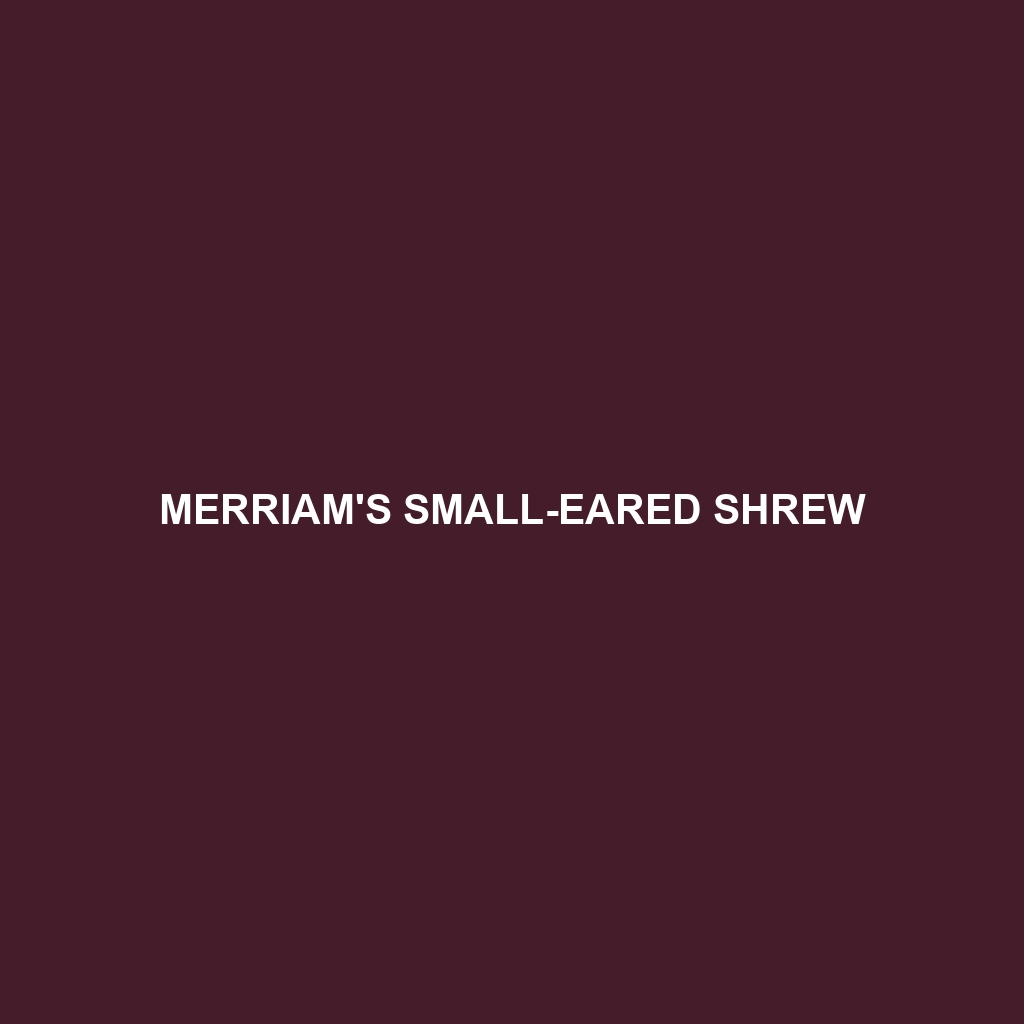Merriam’s Small-eared Shrew
Common Name: Merriam’s Small-eared Shrew
Scientific Name: Sorex merriami
Habitat
Merriam’s Small-eared Shrew is primarily found in the mountainous regions of the western United States, particularly in states like Wyoming, Montana, and Colorado. This species thrives in moist, dense habitats such as meadows, coniferous forests, and areas near streams or wetlands. These environments provide ample cover and moisture, essential for their survival.
Physical Characteristics
Merriam’s Small-eared Shrew is characterized by its small size, typically measuring 9 to 11 cm in length, including its short tail. The shrew features a soft, dense fur that is often a mix of gray and brown, providing camouflage against its natural environment. One of its distinctive features is the small, rounded ears, which are less prominent compared to other shrew species. Their elongated snout and sharp teeth are adapted for their insectivorous diet.
Behavior
This species exhibits primarily nocturnal behavior, being most active during the night. It is known for its agile movements and ability to navigate through dense vegetation. Merriam’s Small-eared Shrew can often be seen foraging for food, using its keen sense of smell to locate prey. They are solitary animals, establishing territories that they defend from intruders.
Diet
Merriam’s Small-eared Shrew has a carnivorous diet consisting mainly of insects, earthworms, and small invertebrates. They also consume small vertebrates when available. These shrews have high metabolic rates, requiring them to eat frequently, often foraging multiple times throughout the night to meet their nutritional needs.
Reproduction
The breeding season for Merriam’s Small-eared Shrew typically occurs in spring and summer. Females can produce several litters per year, with each litter containing 3 to 6 offspring. After a gestation period of about 20 to 30 days, the young shrews are born blind and hairless but develop quickly. Maternal care is crucial for the survival of the young during their early weeks.
Conservation Status
Merriam’s Small-eared Shrew is currently listed as a species of “Least Concern” according to the IUCN Red List. However, habitat destruction and climate change pose potential threats, making it essential to monitor their populations and habitats for future conservation efforts.
Interesting Facts
– Merriam’s Small-eared Shrew is named after the American naturalist Clinton Hart Merriam, who contributed significantly to mammal classification in North America.
– These shrews possess a high metabolism, requiring them to consume food equivalent to their body weight daily, which highlights their role as energetic foragers in the ecosystem.
Role in Ecosystem
Merriam’s Small-eared Shrew plays an important role in its ecosystem as a predator of insects and other invertebrates, helping to control pest populations. Additionally, they serve as prey for larger animals, such as birds of prey and small mammals, thereby contributing to the food web. Their burrowing activities enhance soil aeration and nutrient cycling, benefiting plant communities in their habitats.
